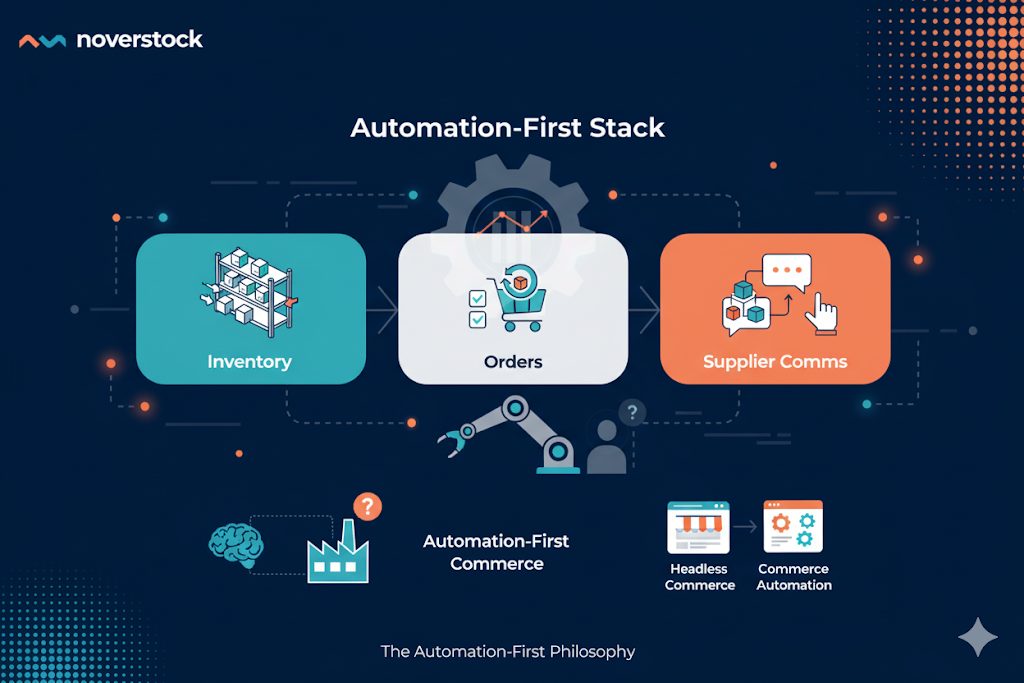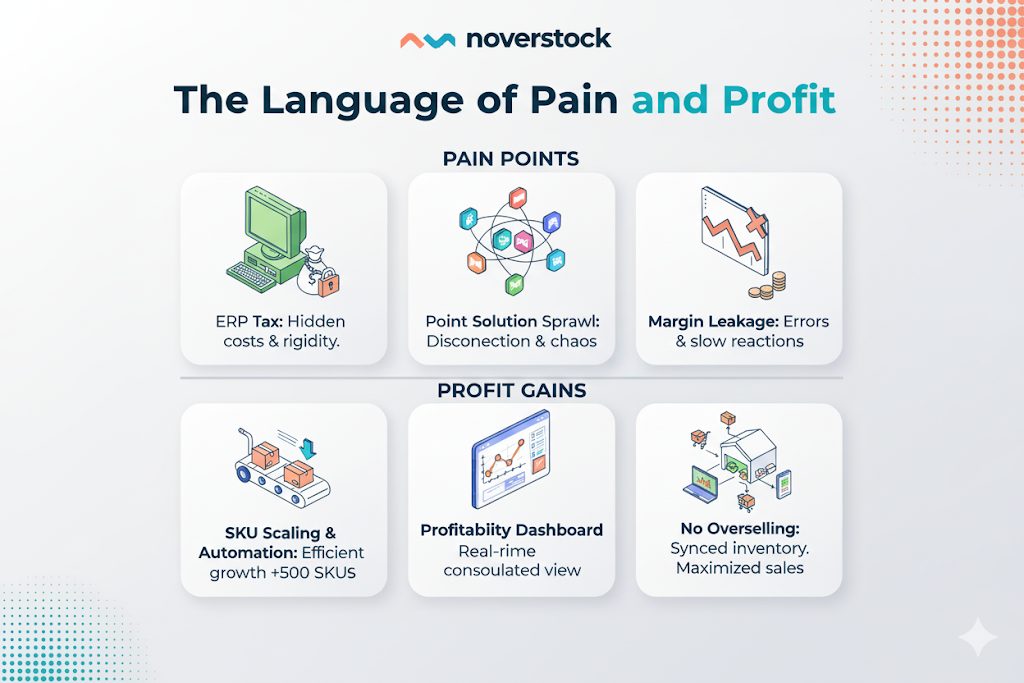The language of commerce is evolving. If your business is ready to move beyond the limitations of legacy systems, you know that terms like “ERP implementation” and “point solution integration” sound more like problems than solutions.
To move into an automation-first future, you need a new vocabulary. This AMS Glossary defines the essential terms for understanding and deploying an Agent Management System—the next evolution of your commerce operating stack.
Core Agent Management System (AMS) Terminology
These are the foundational terms for the new, unified, and automated world of commerce.
Agent Management System (AMS)
The AMS is a new category of software that serves as the central “operating brain” for modern commerce businesses. Unlike traditional ERPs that merely record data, an AMS uses autonomous, workflow-driven agents to actively automate manual processes across the entire commerce backbone: supplier sync, listings, pricing, and shipping. It is designed for scale without adding headcount.
The Agent Ecosystem
These terms define the components that make the AMS function:
- Agent: The fundamental unit of automation within the AMS. A self-governing bot designed to execute a specific, repetitive, or complex operational task (e.g., updating inventory across channels).
- Agent Recipe: A pre-built, reusable workflow that solves a common commerce problem. Recipes can be deployed instantly to automate complex tasks without custom coding.
- Commerce OS: The unified, single-control hub provided by the AMS. It eliminates the need to stitch together multiple point solutions, ensuring all operational data and automation workflows live in one central, orchestrated environment.
- Commerce Operating Brain: A synonym for the Agent Management System, emphasizing its function as the intelligent, decision-making center that coordinates all operational data and tasks.
The Automation-First Philosophy
This lexicon defines the operational shift the AMS enables:

- Automation-First Stack: A technology architecture where every core operational process (inventory, orders, supplier comms) is designed for and executed by automation, with the human operator intervening only for exceptions.
- Automation-First Commerce: The business philosophy that prioritizes autonomous, machine-driven workflows over manual human intervention for all high-volume, repetitive operational tasks.
- Headless Commerce Automation: The separation of the front-end customer experience from the back-end AMS, allowing agents to automate operations independently of the customer-facing website or channel.
Key Functions and Solutions Enabled by AMS
These terms describe the specific operational areas where an AMS delivers automation and control.
| Automation Area | Term | Definition |
| Supply Chain | Supplier Automation | The use of agents to automatically connect with, ingest data from, and send orders to supplier systems, eliminating manual communication and data entry errors. |
| Inventory | Inventory Automation System | The AMS function that automatically tracks, updates, and synchronizes inventory levels across all sales channels in real-time to prevent overselling and stockouts. |
| Orders | Order Automation Software | The automated handling of the order lifecycle, from ingestion and routing to fulfillment and tracking, without manual operator intervention. |
| Pricing | Pricing Automation | The function that uses agents to automatically set, adjust, and optimize product prices based on pre-defined rules, competitor data, and margin goals. |
| Pricing | Dynamic Pricing | The advanced strategy where prices are continuously optimized in real-time, often multiple times per day, based on market demand, inventory levels, and specific profitability targets. |
| Data Sync | Multichannel Orchestration | The act of seamlessly coordinating all sales channels from one central AMS hub, ensuring perfect data parity and eliminating fragmentation. |
The Language of Pain and Profit
These terms define the challenges that scaling companies face today and the financial wins unlocked by the AMS.

- ERP Tax: The hidden, ongoing cost of sticking with rigid, monolithic Enterprise Resource Planning (ERP) systems, including the expense of customization, maintenance, and lost margin due to poor real-time data visibility.
- Point Solution Sprawl: The operational chaos and inefficiency that result from an operations team using dozens of disconnected, single-function software tools.
- Margin Leakage: The slow, systematic loss of profit caused by manual errors, inventory mistakes, order mismanagement, and slow reaction times to competitor pricing.
- SKU Scaling: The logistical and technical challenge of efficiently growing a product catalog past a critical mass (often 500+ SKUs). Manual processes inherently break at this stage.
- Profitability Dashboard: A real-time, consolidated view within the AMS that tracks gross and net profit across every single SKU, sales channel, and transaction.
- Overselling: A critical problem where an item is sold on one channel despite being out of stock due to delayed inventory synchronization—a problem eliminated by real-time AMS agents.
- Manual SKU Updates: The time-consuming, error-prone process of manually updating product details, descriptions, or pricing across multiple spreadsheets and channels, which the AMS replaces entirely.
Ready to Speak the Language of Automation?
Understanding these terms is the first step toward scaling your commerce operations efficiently. The Agent Management System isn’t just another software; it’s a completely new blueprint for how commerce should operate—autonomously, accurately, and profitably.
Want to see an agent in action? Request a personalized demo today.